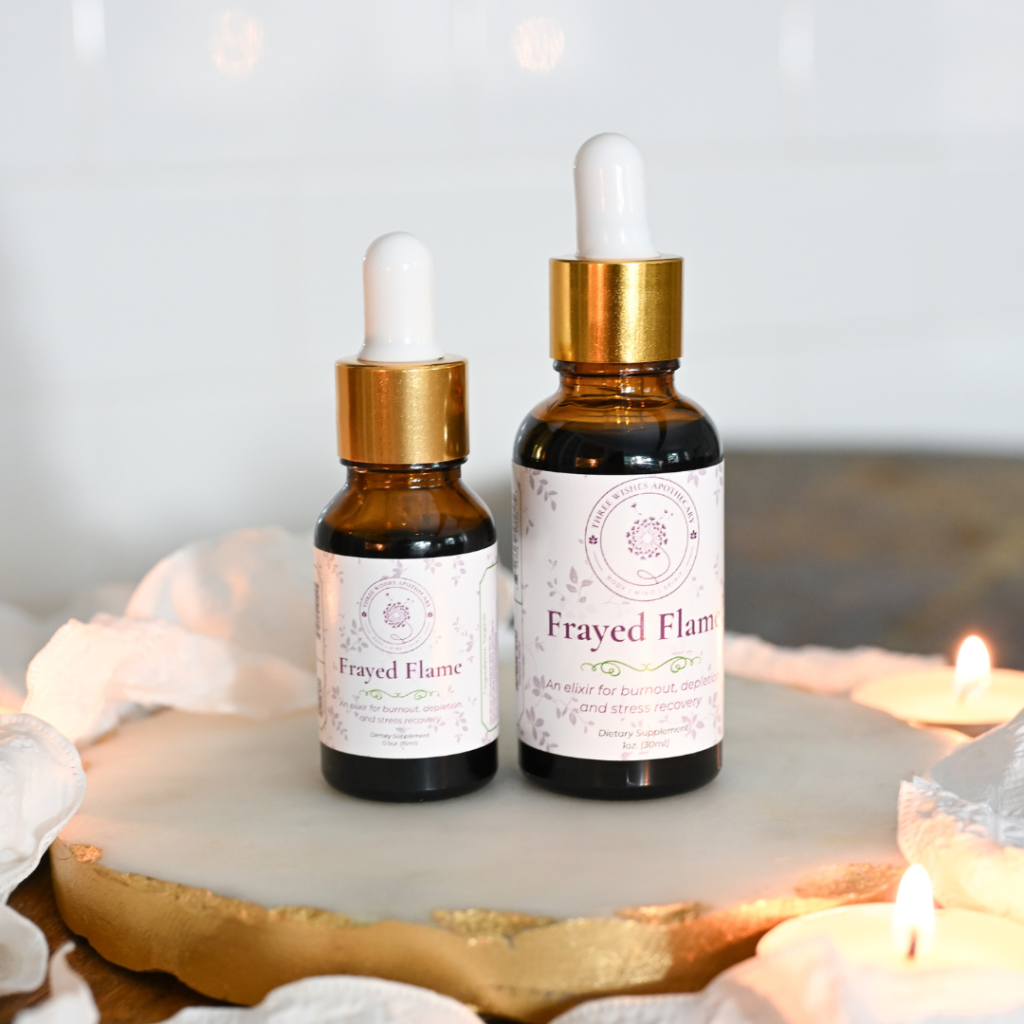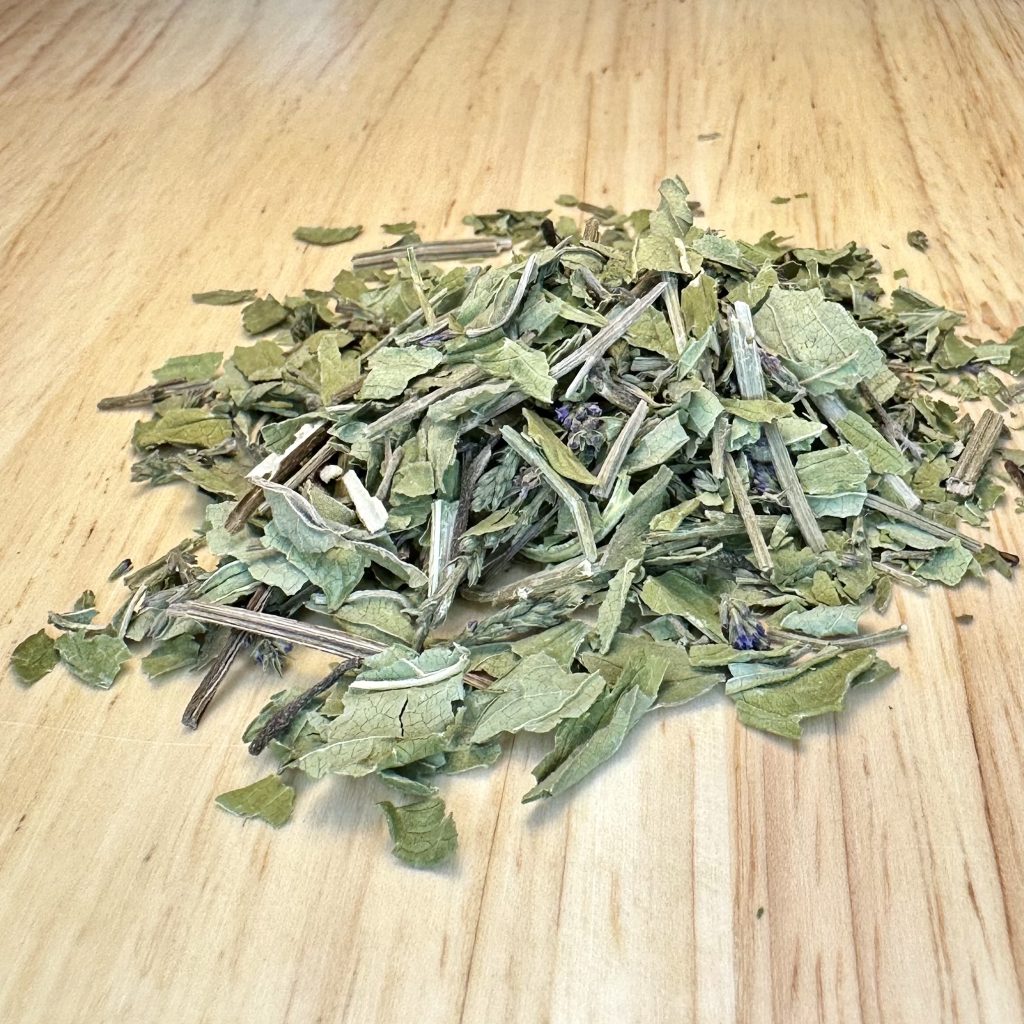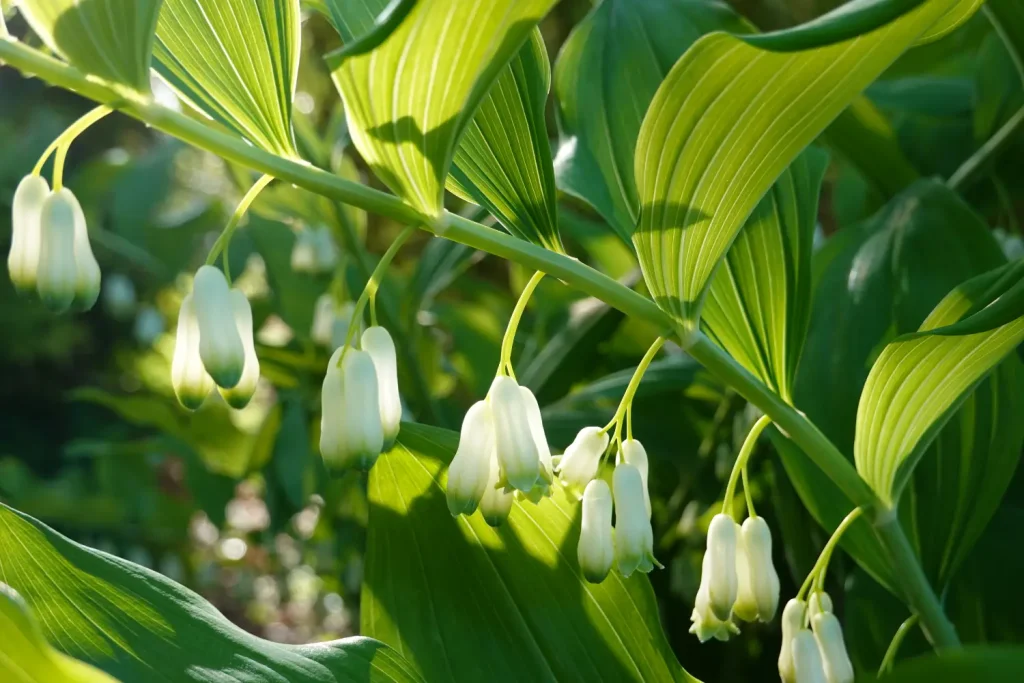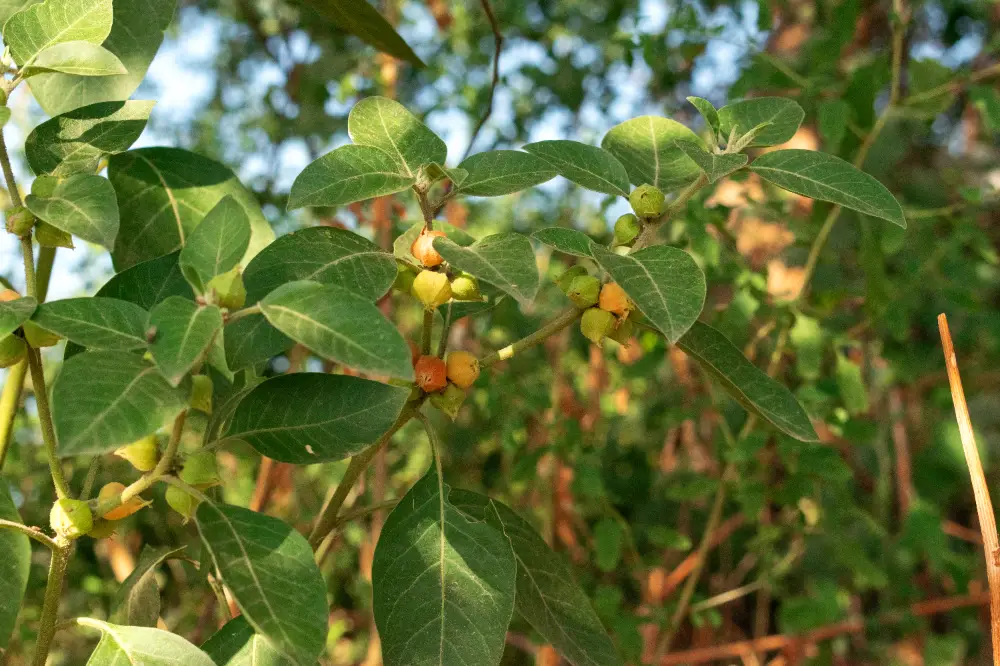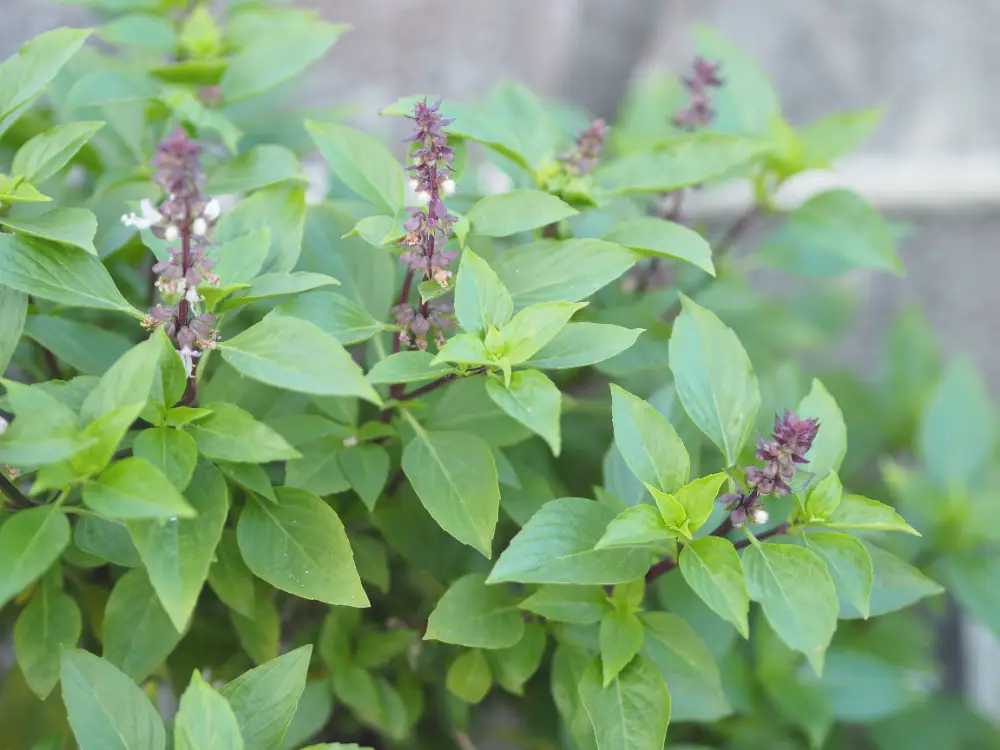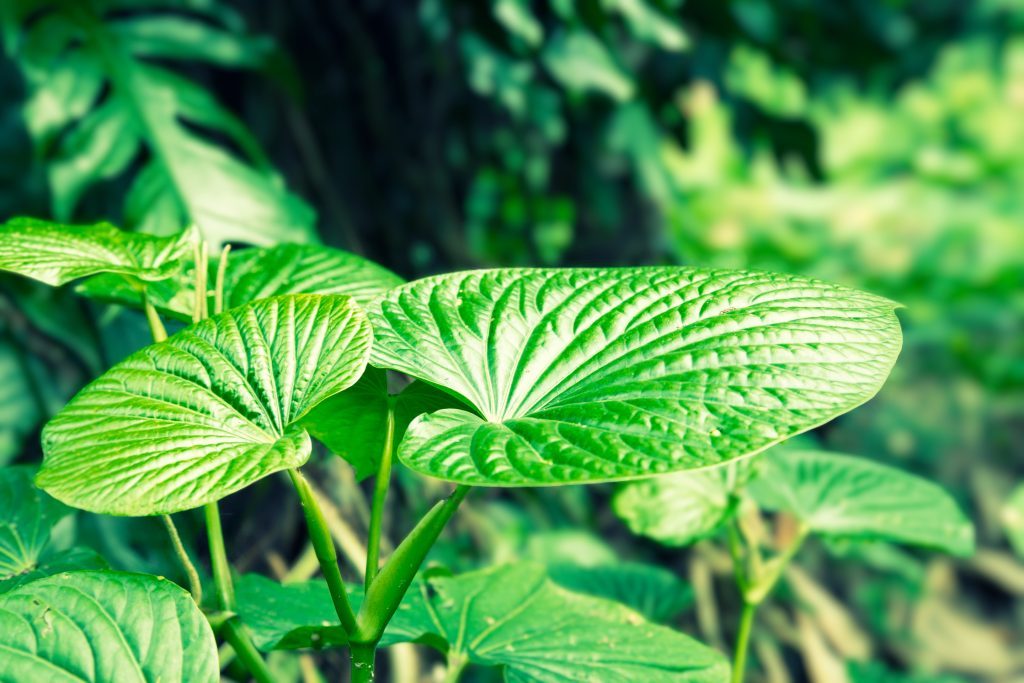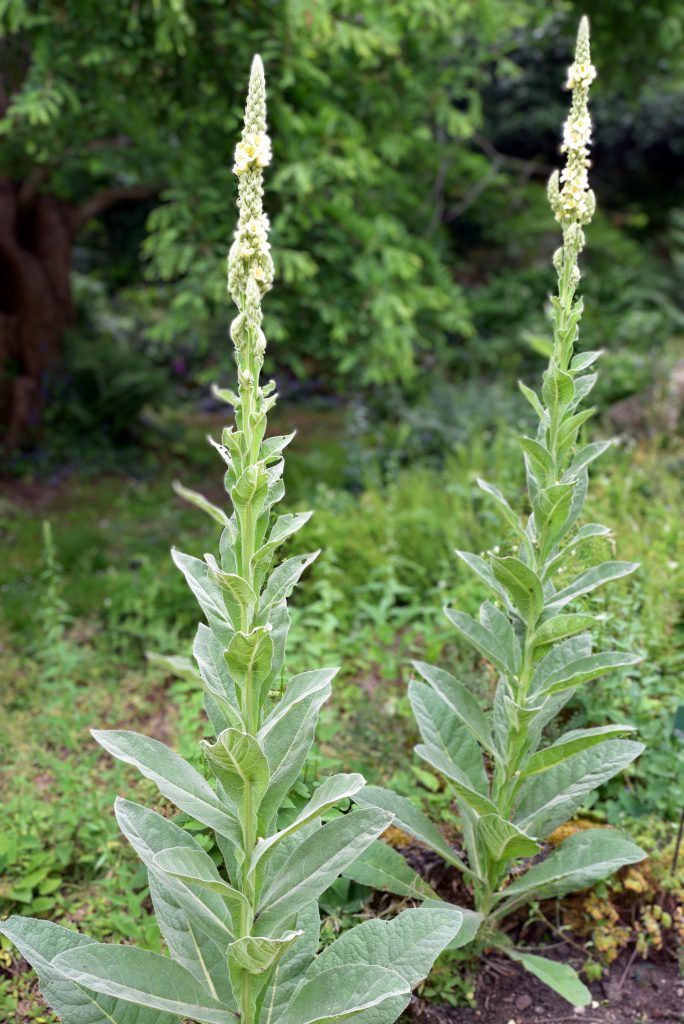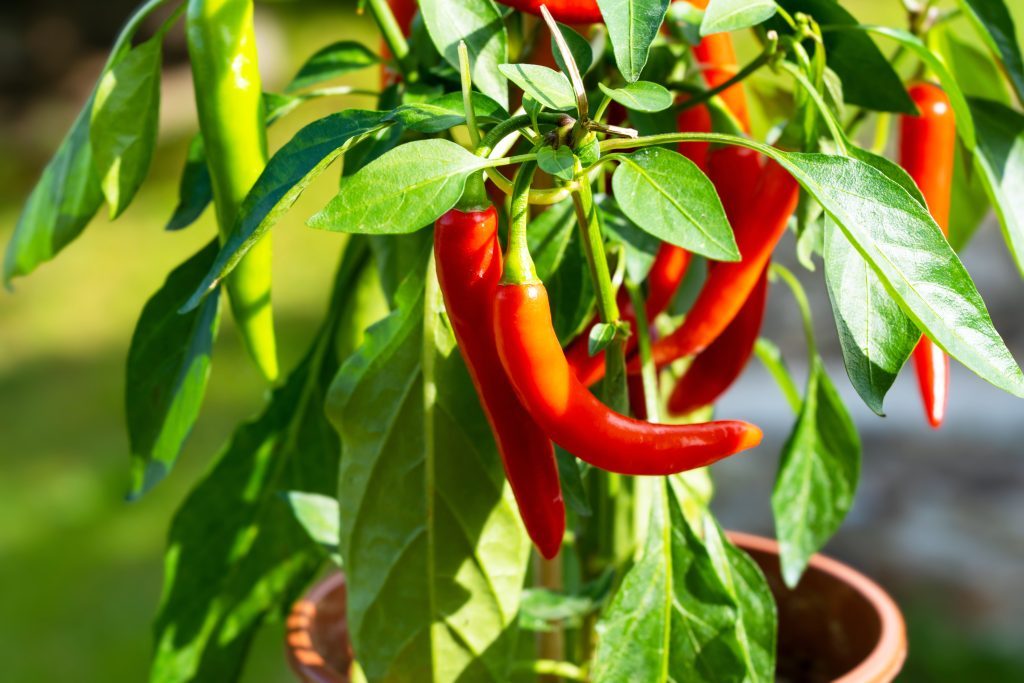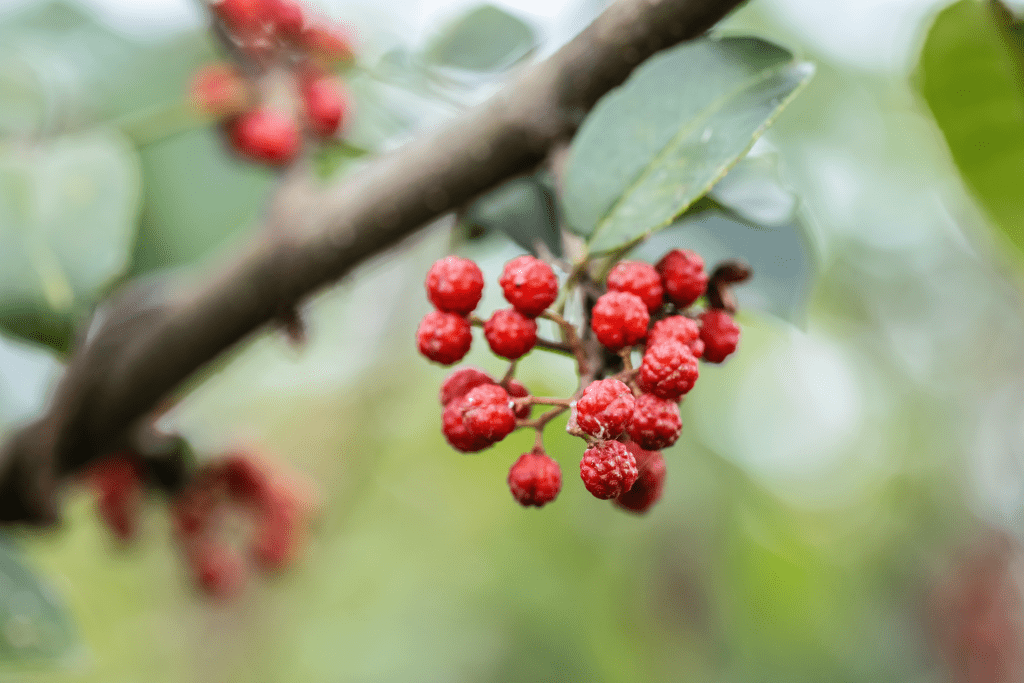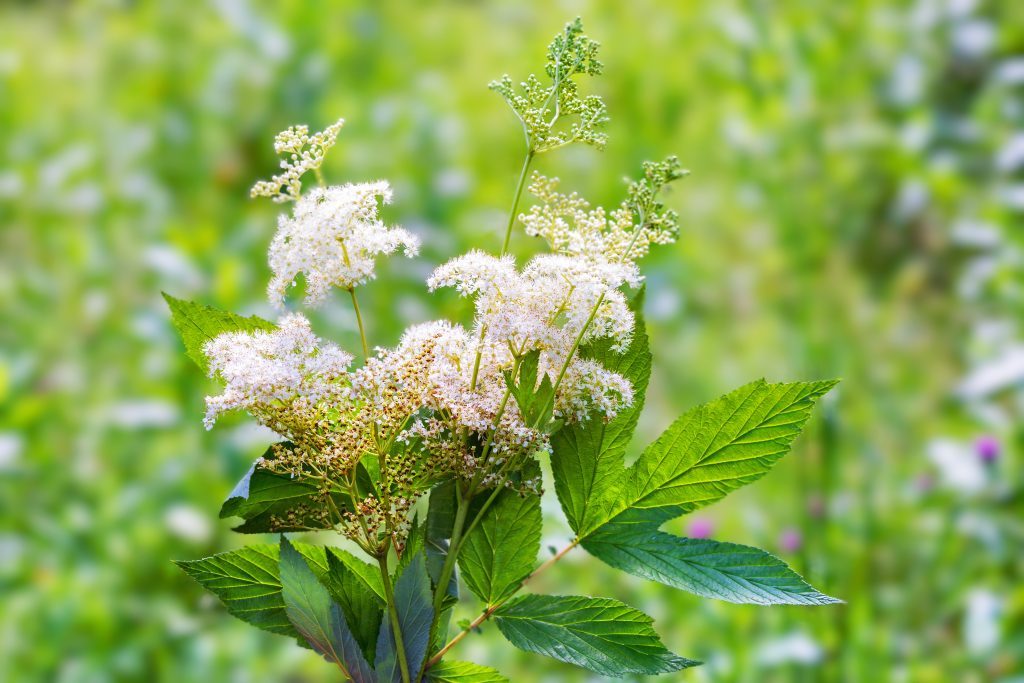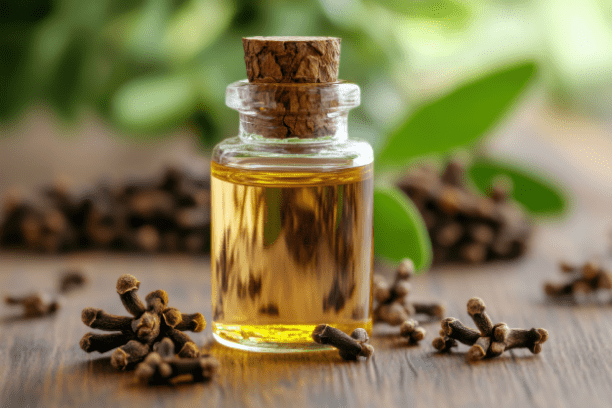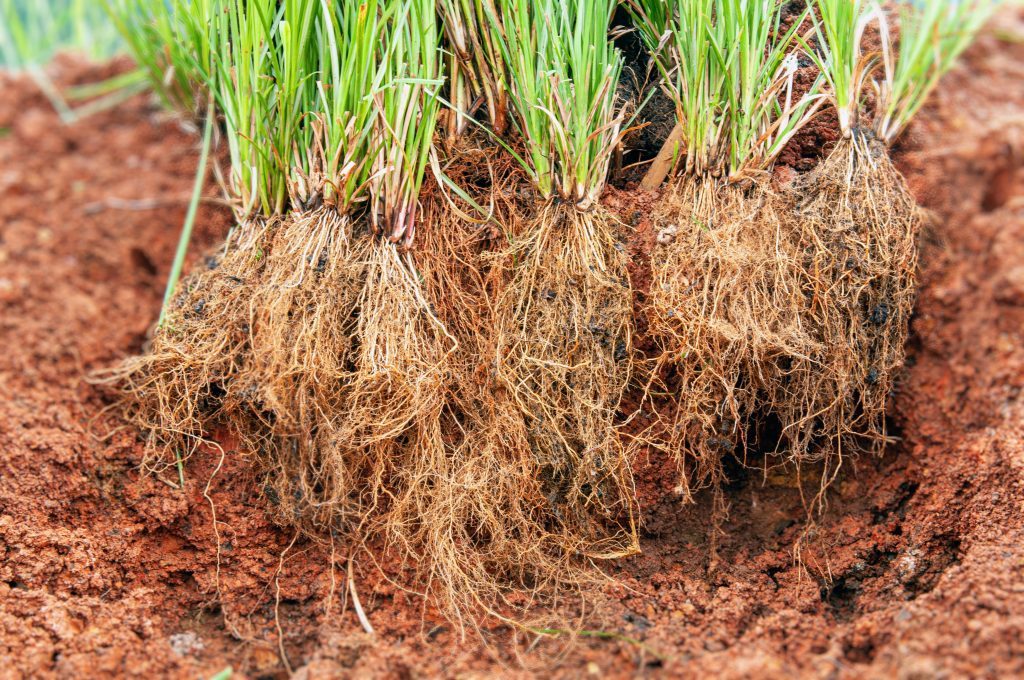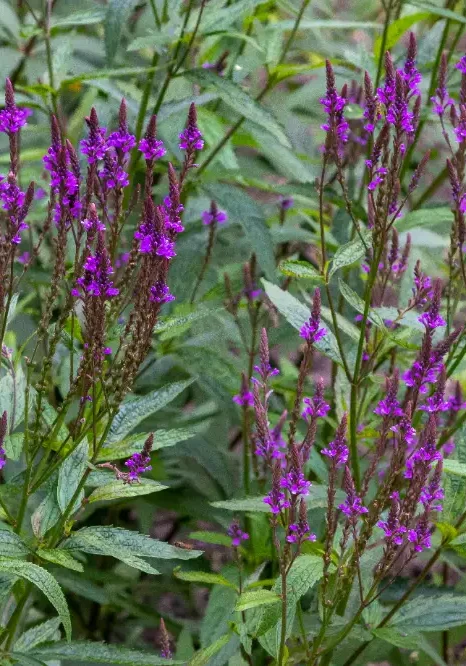
Blue Vervain
Verbena hastata
Verbenaceae (Vervain Family)
Known for its calming effects on the nervous system and as a remedy for various other ailments.
Other names:
Swamp Verbena, Wild Hyssop, Simpler’s Joy.
Superpower
Support stress relief, emotional balance, and immune health.
Uses
Nervine and Relaxant:
Blue Vervain is commonly used as a nervine to calm the nervous system, helping ease anxiety, nervous tension, and insomnia. It is especially helpful for individuals who tend to carry stress in their body, often leading to restlessness or irritability.
Digestive Aid:
As a bitter herb, it stimulates digestion and supports liver health, helping with sluggish digestion and symptoms related to liver congestion, such as bloating or irritability. It also aids in detoxification by promoting bile flow.
Liver Congestion:
Blue Vervain is traditionally used to help clear liver congestion, making it ideal for people with a sluggish liver or emotional tension that affects the liver. It promotes detoxification and relieves symptoms like irritability and anger caused by liver imbalance.
Male Impotence:
Verbena hastata has been used to relieve male impotence related to nervous tension or stress. It helps reduce stress-induced issues by calming the nervous system and improving the body’s response to tension.
Musculoskeletal Issues and Tension:
Known for relieving muscle tension, Blue Vervain is useful for people with tight neck and shoulder muscles or chronic tension due to stress. It acts as a muscle relaxant, alleviating pain and stiffness often linked to emotional stress.
Immune Support:
Blue Vervain supports the immune system during fevers, colds, and infections. Its febrifuge (reduce fever) properties help reduce fever by promoting sweating, making it beneficial for those experiencing fever alongside stress and tension.
Anti-inflammatory and Pain Relief:
This herb has anti-inflammatory and analgesic properties, making it effective for reducing muscle pain, joint inflammation, and symptoms of rheumatism. It is particularly helpful when these issues are accompanied by nervous tension or stress.
Women’s Health:
Blue Vervain is used to regulate menstrual cycles and relieve menstrual cramps by relaxing the uterine muscles. It is beneficial for those who experience menstrual pain alongside stress or emotional tension.
Cautions
- Pregnancy and Breastfeeding:
Blue Vervain may stimulate the uterus, which makes it unsafe during pregnancy, especially in the early stages. Use during breastfeeding is not well-studied, so caution is advised. - Hypotension:
Blue Vervain has the potential to lower blood pressure, so individuals with low blood pressure or those on antihypertensive medications should use it carefully to avoid adverse effects. - Gastrointestinal Sensitivity:
Being a bitter herb, Blue Vervain can cause stomach discomfort, nausea, or vomiting in some individuals, particularly those with sensitive digestive systems. - Sedative Effects:
Blue Vervain has calming, sedative effects, so it may interact with sedative medications such as benzodiazepines, barbiturates, or sleep aids. This could amplify the sedative properties, leading to excessive drowsiness. - Pharmaceutical Interactions:
Blue Vervain may interact with:- Antidepressants: It may enhance the effects of certain antidepressants or anti-anxiety medications, potentially leading to increased drowsiness or other side effects.
- Blood Pressure Medications: Its hypotensive effect could lower blood pressure further in those on antihypertensive drugs.
- Anticoagulants: There is potential for interactions with blood thinners like warfarin, so care should be taken if using both.
Known Chemical Constituents
- Iridoid Glycosides:
(verbenalin, aucubin)
These compounds are known for their anti-inflammatory, analgesic, and liver-protecting properties. Verbenalin is also thought to contribute to the plant’s sedative and nervine effects. - Flavonoids:
(apigenin, luteolin)
Flavonoids are powerful antioxidants that help combat oxidative stress, reduce inflammation, and support cardiovascular health. - Tannins:
Tannins have astringent properties, which help to tone tissues and reduce inflammation, making them useful for digestive and respiratory health. - Volatile Oils:
These oils, though present in small amounts, contribute to the herb’s soothing and calming effects, especially in teas or tinctures. - Bitter Principles:
The bitter compounds in Blue Vervain stimulate digestion and liver function, making the herb effective as a digestive tonic.
Botanical Description
Plant Type:
- Perennial Herb
Verbena hastata is a hardy, herbaceous perennial that grows between 1 to 1.5 meters (3 to 5 feet) tall. It is native to North America, thriving in moist meadows, wetlands, and along streambanks.
Leaves:
- Opposite, Lance-shaped, and Serrated
The leaves are long (up to 15 cm or 6 inches), lance-shaped (lanceolate), and arranged opposite along the square, ridged stems. The leaf margins are serrated (toothed), giving them a rough texture. They are dark green in color and have a slight hairiness.
Flowers:
- Small, Violet-blue Flowers in Spikes
The flowers of Blue Vervain are small and tubular, typically violet to blue in color. They form dense, elongated spike-like clusters at the tops of the plant’s stems. The flowering spikes can be up to 15 cm (6 inches) long, and the flowers bloom from the bottom of the spike upward throughout the summer (July to September).
Fruit:
- Capsules (Nutlets)
After flowering, Blue Vervain produces small, dry fruits known as nutlets. Each nutlet contains several seeds, which are dispersed to help propagate the plant.
Stem:
- Square and Hairy
Like many plants in the mint family, Blue Vervain has a square-shaped stem that is slightly hairy. The plant’s erect, branching habit gives it a tall, striking appearance in its natural habitats.
Root System:
- Fibrous Roots
Blue Vervain has a fibrous root system, which allows it to anchor in moist soils and take advantage of wet environments.
Habitat:
- Moist and Wetlands Areas
Verbena hastata is typically found in wet meadows, riverbanks, pond edges, and lowland fields throughout much of North America. It thrives in moist to wet soils and can tolerate periodic flooding, making it an ideal plant for riparian areas and rain gardens.
Growth Habit:
- Erect and Upright
The plant grows in an upright form, with branching stems and a robust, spreading habit that makes it a valuable addition to gardens focused on wildlife habitats or wetland restoration.
Fun Facts
Blue Vervain was considered a sacred herb by both the ancient Egyptians and Druids, who believed it had powerful magical and healing properties. In ancient rituals, it was used to cleanse altars and sacred spaces. The Druids also used it in their ceremonies to protect themselves from negative forces and as a potent herb for invoking divine blessings.
Parts Used
Aerial (above ground), seeds, root.
Harvest
Best Time to Harvest:
- Flowers: The best time to harvest Blue Vervain’s flowers is when they are in full bloom, typically in mid to late summer (July to September), depending on your region. The flowers should be collected early in the morning when their volatile oils are most concentrated.
- Leaves: Leaves can be harvested around the same time as the flowers, usually in late summer, when they are vibrant and green.
- Roots: The roots are typically harvested in late fall after the plant has gone dormant, or in early spring before new growth begins. This is when the plant’s energy is concentrated in the roots.
Parts Used:
- Flowers and leaves are most commonly used for teas, tinctures, and other preparations, as they contain the highest concentration of active compounds.
- Roots are sometimes used in more concentrated preparations, though less commonly than the aerial parts.
Harvesting Tips:
- Use sharp scissors or pruning shears to avoid damaging the plant. Cut the flower spikes just above a leaf node to encourage regrowth.
- Sustainability: As Blue Vervain is a wild plant in some areas, harvest it responsibly by leaving at least two-thirds of the plant to ensure it can continue to thrive in its habitat.
Preparations
Tincture,Infusion (Tea), decoction, powder, capsules, poultice, syrup, bath Soak.
Sacred Rituals
Many Native American tribes and ancient healers used Blue Vervain in purification rituals to heal both the body and spirit. It was believed to clear emotional blockages and help in releasing anger or resentment, aligning the body with a sense of peace and balance.
Affirmations
“I am at peace, my spirit is calm, and my path is clear.”
Spiritual Associations
Blue Vervain has been historically linked to enhancing dreams and visionary states. In rituals, it was sometimes used to promote lucid dreaming or to help individuals connect more deeply with their inner wisdom. It is thought to help open channels for intuitive insights and spiritual visions.
Functions
A substance or agent that reduces inflammation in the body, soothing irritation, swelling, or redness in tissues.
Bitter tonic
Bitter tonic refers to a substance or agent, typically an herb or blend of herbs, that combines the stimulating properties of bitters with overall strengthening and balancing effects on the digestive system.
DepressionDepression is a mental health condition characterized by persistent feelings of sadness, hopelessness, and a loss of interest or pleasure in activities, often accompanied by physical symptoms like fatigue, changes in appetite, or difficulty concentrating.
DiaphoreticA substance or agent that promotes perspiration, helping the body regulate temperature, detoxify, and respond to fevers.
EmeticA substance or agent that induces vomiting, often used to expel harmful substances from the stomach in cases of poisoning or ingestion of irritants.
Liver HealthThe optimal functioning of the liver, which plays a critical role in detoxification, metabolism, digestion, and overall bodily health.
NervineA nervine is a substance that supports the nervous system, promoting relaxation, reducing tension, or restoring balance to nerve function, depending on the herb’s specific properties.
Nervous System HealthNervous system health refers to the overall functioning, balance, and well-being of the nervous system, which regulates the body’s communication, movement, and response to stimuli.

